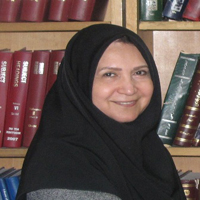Comparing the Effects of Mindfulness and Cognitive Rehabilitation Therapy on Emotion Regulation in Substance Abusers
Substance Dependence (SD) is among society's most severe and complex problems. An issue that threatens the young generation is SD. Emotion dysregulation is among the major issues for recovery in individuals with Substance Use Disorders (SUDs). Psychological training, such as Mindfulness-Based Therapy (MBT) can increase self-control, leading to improved Emotion Regulation (ER); thus, it may be promising for treating SD. The brain's flexibility creates a new pattern of neural communication in response to different conditions; this capability is the basis of cognitive rehabilitation, which refers to specific interventions that improve such functions as attention, memory, problem solving, and planning, i.e., helpful for ER. Cognitive Rehabilitation Therapy (CRT) by moderating cognitive deficits in substance users improves ER, decreases craving, and relapse. Thus, the present study compared the effects of MM and CRT on difficulties in ER in individuals with SUDs.
This was a quasi-experimental study with pretest-posttest, a three-month follow-up and a control group design. The statistical population of this study included individuals with SUDs referring to SUDs clinics in Tehran City, Iran, in 2019. Moreover, 54 subjects participated and were randomly assigned to 3 groups of MBT, CRT, and control (n=18/group). The inclusion criteria were male gender (due to difficulty in accessing female consumers); the age range of 25-50 years; a diagnosis of SUD based on the DSM-5 criteria; providing an informed consent form; a history of ≥12 months of SUDs, and literacy. The exclusion criteria included absence from >2 treatment sessions, having major psychiatric disorders (e.g., bipolar disorder, psychosis, epilepsy, & seizures), reporting a history of suicide, and unwillingness to participate in the study. The Difficulties in Emotion Regulation Scale (DERS) was completed in the study groups at pretest, posttest, and follow-up stages. The MBT was performed in 8 one-hour weekly sessions according to Bowen et al.'s protocol (2009). The CRT was a 12-session intervention that includes exercises i.e., performed individually (two 1-hour wekly sessions). This protocol includes the Program for Attentive Rehabilitation for Inhibition and Selective Attention (PARISA). The obtained data were analyzed using descriptive statistics (mean & standard deviation) and inferential statistics, including repeated-measures Analysis of Variance (ANOVA), Chi-squared test, and Bonferroni post hoc test in SPSS at the significance level of 0.05.
The obtained results suggested that the effect of time (p<0.001), the effect of group (p=0.027), and the interaction of time and group (p<0.001) were significant on ER. In the MBT and CRT groups, there was a significant difference in the mean scores of difficulty in ER in pretest and posttest steps (p<0.001). In the MBT group, a significant difference was observed between the mean scores of difficulty in ER between the posttest and follow-up (p=0.003), indicating that the intervention was not sustainable in the follow-up phase; however, in the CRT group, there was no significant difference between the mean score of difficulty in ER between the posttest and follow-up steps (p=0.904), indicating that the intervention effects remained sustainable in the follow-up phase. Furthermore, there was a significant difference between the intervention groups and the control group in difficulty in ER (p<0.05); however there was no significant difference between the two intervention groups (p=0.75) in this regard. However, based on the mean scores, the MBT (93.94±7.0 in posttest & 95.75±6.71 in follow-up) was more effective than the CRT (99.67±8.88 in post-test & 99.07±8.31 in follow-up).
According to the collected findings, MBT and CRT were effective in modulating emotion dysregulation in individuals with SUDs. Therefore, these approaches can be used in SUDs treatment centers.
- حق عضویت دریافتی صرف حمایت از نشریات عضو و نگهداری، تکمیل و توسعه مگیران میشود.
- پرداخت حق اشتراک و دانلود مقالات اجازه بازنشر آن در سایر رسانههای چاپی و دیجیتال را به کاربر نمیدهد.



